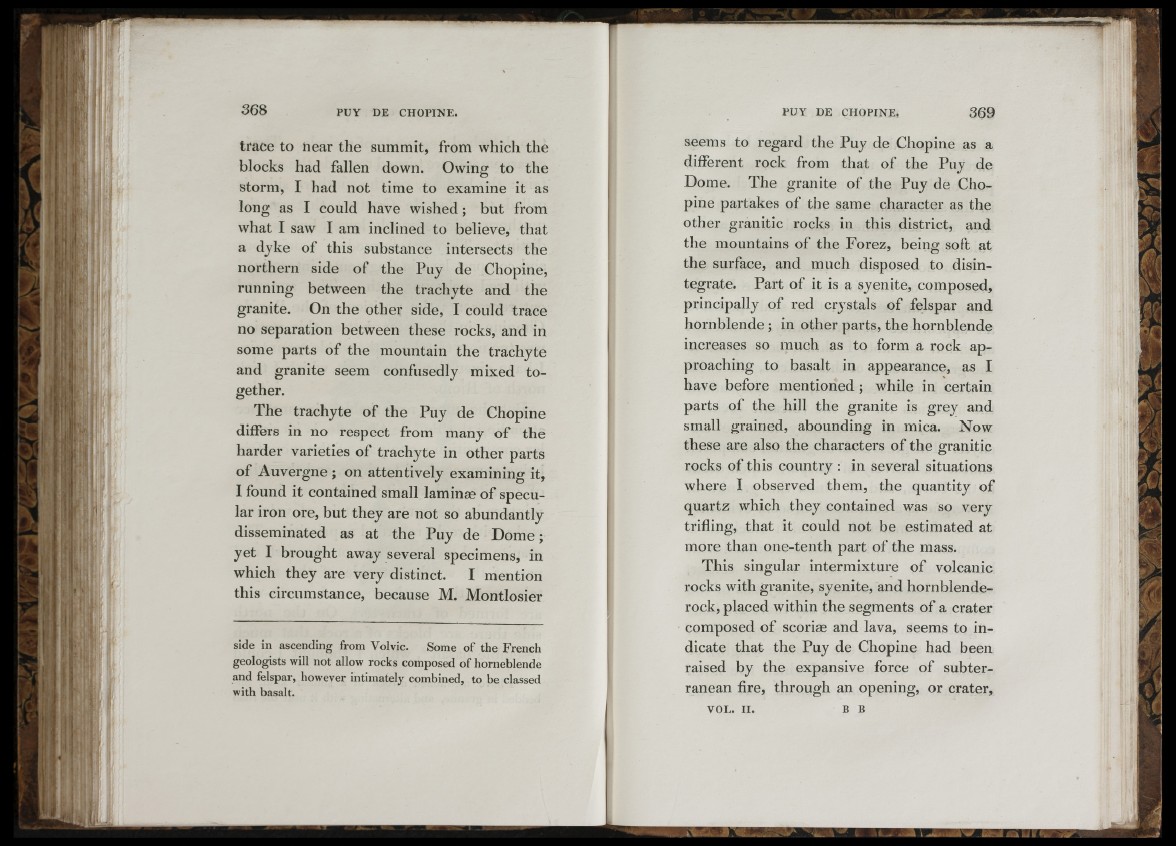
î ■■ .T
Y
m
%A
F«'
V f
: * ■
■ -fM ^ :
368 P U Y D E C H O P IN E .
trace to near the summit, from which the
blocks had fallen down. Owing to the
storm, I had not time to examine it as
long as I could have wished; but from
what I saw I am inclined to believe, that
a dyke of this substance intersects the
northern side of the Puy de Chopine,
running between the trachyte and the
granite. On the other side, I could trace
no separation between these rocks, and in
some parts o f the mountain the trachyte
and granite seem confusedly mixed together.
The trachyte of the Puy de Chopine
differs in no respect from many o f the
harder varieties of trachyte in other parts
o f Auvergne ; on attentively examining it,
1 found it contained small laminae of specular
iron ore, but they are not so abundantly
disseminated as at the Puy de D om e ;
yet I brought away several specimens, in
which they are very distinct. I mention
this circumstance, because M. Montlosier
side in ascending from Volvic. Some of the French
geologists will not allow rocks composed of horneblende
and felspar, however intimately combined, to be classed
with basalt.
P U Y D E C H O P IN E . 369
seems to regard the Puy de Chopine as a
different rock from that of the Puy de
Dome. The granite of the Puy de Chopine
partakes of the same character as the
other granitic rocks in this district, and
the mountains of the Forez, being soft at
the surface, and much disposed to disintegrate.
Part of it is a syenite, composed,
principally of red crystals of felspar and
hornblende ; in other parts, the hornblende
increases so much as to form a rock approaching
to basalt in appearance, as I
have before mentioned ; while in certain
parts of the hill the granite is grey and
small grained, abounding in mica. Now
these are also the characters of the granitic
rocks of this country : in several situations
where I observed them, the quantity of
quartz which they contained was so very
trifling, that it could not be estimated at
more than one-tenth part of the mass.
This singular intermixture of volcanic
rocks with granite, syenite, and hornblende-
rock, placed within the segments of a crater
composed o f scoriæ and lava, seems to indicate
that the Puy de Chopine had been
raised by the expansive force of subterranean
fire, through an opening, or crater,
V O L . I I . B B
i